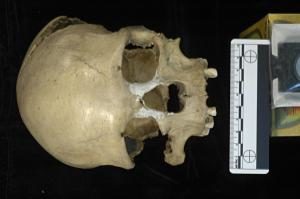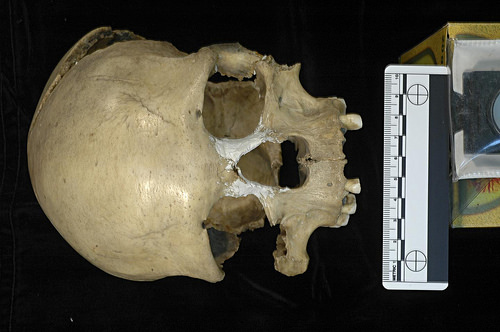
UNIVERSITY OF THE BASQUE COUNTRY—A palaeogenomics study* conducted by the Human Evolutionary Biology group of the Faculty of Science and Technology, led by Concepción de la Rua, in collaboration with researchers in Sweden, the Netherlands and Romania, has made it possible to retrieve the complete sequence of the mitogenome of the Pestera Muierii woman (PM1) using two teeth. This mitochondrial genome corresponds to the now disappeared U6 basal lineage, and it is from this lineage that the U6 lineages, now existing mainly in the populations of the north of Africa, descend from.
The study has not only made it possible to confirm the Eurasian origin of the U6 lineage but also to support the hypothesis that some populations embarked on a back-migration to Africa from Eurasia at the start of the Upper Palaeolithic, about 40-45,000 years ago. The Pestera Muierii individual represents one branch of this return journey to Africa of which there is no direct evidence owing to the lack of Palaeolithic fossil remains in the north of Africa.
_________________________________________
The complete mitogenome of Pestera Muierii woman has been retrieved. Credit: E. Trinkaus and A. Soficaru
________________________________________
“Right now, the research group is analysing the nuclear genome, the results of which could provide us with information about its relationship with the Neanderthals and about the existence of genomic variations associated with the immune system that accounts for the evolutionary success of Homo sapiens over other human species with whom it co-existed. What is more, we will be able to see what the phenotypic features of early Homo sapiens were like, and also see how population movements in the past influence the understanding of our evolutionary history,” explained Prof Concepción de la Rúa.
Source: Edited from the press release of the University of the Basque Country.
______________________________________________________
*M. Hervella, E.M. Svensson, A. Alberdi, T. Günther, N. Izagirre, A.R. Munters, S. Alonso, M. Ioana, 5, F. Ridiche, A. Soficaru, M. Jakobsson, M.G. Netea & C. de-la-Rua, The mitogenome of a 35,000-year-old Homo sapiens from Europe supports a Palaeolithic back-migration to Africa. Scientific Reports DOI: 10.1038/srep25501
______________________________________________________

______________________________________________
Travel and learn with Far Horizons.
____________________________________________
This richly illustrated issue includes the following stories: Recent findings shedding new light on the whereabouts of the remains of Philip of Macedon, father of Alexander the Great; how an archaeologist-sculptor is bringing bones of the dead back to life; archaeologists uncovering town life at the dawn of civilization; an exclusive interview with internationally acclaimed archaeologist James M. Adovasio about what makes the Meadowcroft Rockshelter prominent in the ongoing search for the first Americans; what archaeologists are finding at the site of the ancient city of Gath, the home town of the biblical Philistine giant, Goliath; and how scientists are redrawing the picture of human evolution in Europe. Find it on Amazon.com.







